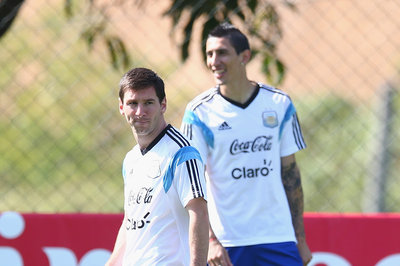Joe Pavelski had a fantastic year in 2013-14, but will that raise expectations too high for 2014-15 and beyond? Let's name realistic hopes for his year with the Sharks.
Playing on a team that has Joe Thornton and Patrick Marleau, it can be easy for Joe Pavelski to sneak under the radar. He did his best to change that during the 2013-14 season when he scored a career-high 41 goals for the San Jose Sharks, a number that was good enough for third best in the entire league and 10 more than his previous personal best.
The bad news for him is that type of performance can lead to some unrealistic expectations and unnecessary criticism when they are not reached.
The numbers
| Games | Goals | Assists | Points |
| 82 | 41 | 38 | 79 |
What went right in 2013-14?
From a shooting perspective, pretty much everything went right for Pavelski. Even though it was the second year in a row where he managed fewer than three shots per game, he still filled the back of the net like one of the NHL's elite and at a level he had never come close to reaching over the previous seven years of what has been a very successful career.
Like many career years, you can thank a massive spike in his shooting percentage (going from 12.3 percent in 2012-13 all the way up to 18.1 percent) that was seven points higher than his career average for his sudden goal-scoring touch.
Can he repeat that in 2014-15?
History says no.
If there is one thing we know about shooting percentages it's that they have a tendency to wildly fluctuate from year to year (and even month to month during a season), and if a player finishes one season well above his normal career levels, there is a good chance he is going to see it fall the following year.
Since the 2000-01 season there were 13 players that had similar seasons to Pavelski's 2013-14 campaign, having finished with at least 200 shots on goal and scored on more than 18 percent of them.
Every one of them saw a drop in their shooting percentage the next season, and as a group the average drop was more than four percent.
| Player | Season | Age | Goals | Sh% | Next Season Goals | Next Season Sh% | Sh% Difference |
| Patrick Elias | 2000-01 | 24 | 40 | 18.2 | 29 | 14.6 | -3.6 |
| Milan Hejduk | 2000-01 | 24 | 41 | 19.2 | 21 | 15.1 | -4.1 |
| Marian Hossa | 2002-03 | 24 | 45 | 19.7 | 36 | 15.5 | -4.2 |
| Todd Bertuzzi | 2002-03 | 27 | 46 | 18.9 | 17 | 10.9 | -8.0 |
| Milan Hejduk | 2002-03 | 26 | 50 | 20.5 | 35 | 15.8 | -4.7 |
| Thomas Vanek | 2006-07 | 23 | 43 | 18.1 | 36 | 15.0 | -3.1 |
| Teemu Selanne | 2006-07 | 36 | 48 | 18.7 | 12 | 13.8 | -4.9 |
| Daniel Alfredsson | 2007-08 | 35 | 40 | 18.4 | 24 | 11.8 | -6.6 |
| Dany Heatley | 2007-08 | 27 | 41 | 18.3 | 39 | 15.1 | -3.2 |
| Brad Boyes | 2007-08 | 25 | 43 | 20.8 | 33 | 15 | -5.8 |
| Ilya Kovalchuk | 2007-08 | 24 | 52 | 18.4 | 43 | 15.6 | -2.8 |
| Thomas Vanek | 2008-09 | 25 | 40 | 19.0 | 28 | 15.4 | -3.6 |
| Steven Stamkos | 2011-12 | 21 | 60 | 19.8 | 29* | 18.5 | -1.3 |
| Joe Pavelski | 2013-14 | 29 | 41 | 18.2 | TBD | TBD | TBD |
*Lockout shortened season
So what should we expect?
Pavelski is entering his age 30 season and is at a point in his career where most players are past their offensive peak and starting to decline -- although that doesn't mean they're no longer good or productive. Even though he had his best goal-scoring season to date at 29, there are some underlying red flags, specifically his declining ability to generate shots despite playing more minutes per game and still getting more than three-and-a-half minutes of power play time per game.
If Pavelski averaged 2.8 shots per game, which is where he has been the past two seasons, and saw the 4.3 percent drop in shooting percentage (13.9 percent for '14-15) that the players above experienced, that would put him at 30 goals over 82 games. If his shooting percentage regressed all the way back to his career average (11.1) that would put him at 25 goals.
If he falls back to that level this season the story shouldn't be about something he is doing wrong, but about everything that went perfect the previous year.
from SBNation.com - All Posts http://ift.tt/1rqfmME








0 commentaires:
Enregistrer un commentaire